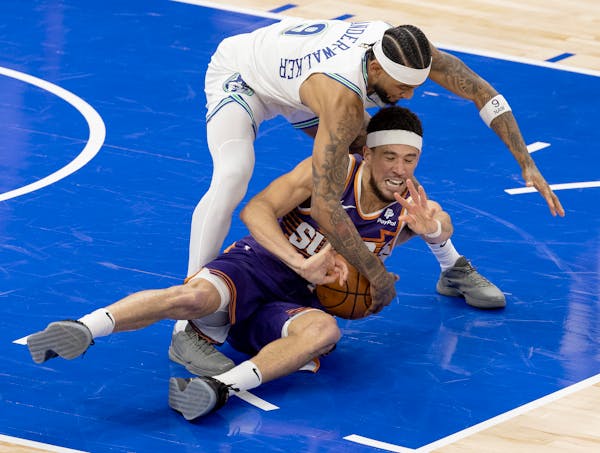MARSHALL, MINN. - The rooster pheasant erupted in a blur from the neck-high prairie grass.
Patti Carr shouldered her 12 gauge and fired once, then again, dropping the fleeing bird.
Her 2-year-old springer spaniel, Annie, eagerly fetched the feathered trophy.
"Oh, I'm so excited. Good retrieve, Annie," Carr said, stroking the dog's head. Nearby, hunting partner Lori Laine, cradling her 20 gauge, looked on.
The friends from Detroit Lakes, Minn., hunted ringnecks over the weekend near Marshall, and by sunset Saturday, each had a bird.
"That was fun," Carr said.
Though women in America have gained ground in many traditionally male-dominated fields, in Minnesota's pheasant fields, duck blinds or deer stands, female hunters remain a distinct minority.
About 56,000, or 11 percent, of the state's 500,000 deer hunters are female, as are about 12,000 (4 percent) of the 290,000 small game hunters, according to the Department of Natural Resources license data.
"Female interest in hunting has been creeping up slightly," said Jay Johnson, DNR hunter recruitment coordinator. But not enough to change those percentages much recently.
Carr and Laine have hunted pheasants together about a dozen years, in recent seasons with Laine's 3-year-old German wire-haired pointer tagging along. They chase ringnecks in North Dakota and southwestern Minnesota.
"Ten years ago we didn't see many women hunters," said Laine, 52, who grew up in the Detroit Lakes-Park Rapids area in a hunting family. "The first time we went to North Dakota, people stared at us," she said.
Said Carr, 48: "People wondered where our husbands were."
They were home.
Families hunted
Carr, whose husband hunts deer but not birds, learned her shotgunning skills at a hunting preserve and sporting clays course that Laine and her husband once owned.
Eventually, the two women formed an all-female sporting clays team, and in time, target shooting evolved into pheasant hunting and dog training.
Laine did some deer hunting growing up. Now, "if it has brown eyes, I can't shoot it," she said.
Sometimes, she and her husband hunt birds together. But she relishes her "girls-only" hunting trips for pheasants, among them their North Dakota journeys.
"Four of us went out to North Dakota," Carr said, recalling their first trip to that state. "We got hooked up with a guy who owned land, and we paid him with baked goods."
Ringnecks and the places they inhabit, the women say, are especially alluring.
"I like the exercise in pheasant hunting," Laine said. "You're outside on a beautiful day. And I love the dog aspect. If you get a bird, it's a bonus."
Said Carr, who grew up in Detroit Lakes:
"I like the camaraderie, walking, seeing the country, watching my dog work -- it's so much fun to see the birds flush. And they are good eating," she said.
She believes men are more accepting of female hunters these days. Still, she and Laine rarely encounter women hunting solely with other women. Usually they are with husbands or boyfriends.
But that may be changing.
Bird hunting interest
"Demand for upland bird hunting among women has increased," said Linda Bylander, Becoming an Outdoors Woman (BOW) coordinator. BOW, a DNR program, introduces women to a variety of outdoor activities, including hunting.
"It's an easier entry sport for women than deer hunting," she said.
Because of the growing interest, Bylander will introduce in 2013 a new series of upland bird hunting programs for women.
"Women make up over 50 percent of the population, but not 50 percent of hunters. We want women to enjoy these sports," Bylander said, adding:
"The barriers are being knocked down. It's more acceptable. And there's more and more young girls out there hunting."
Carr's advice:
"I would tell other women to not be afraid to step out of your comfort zone, and just try it. Because if you don't ever try it, you'll never know."
Doug Smith dsmith@startribune.com Twitter: @dougsmithstrib
